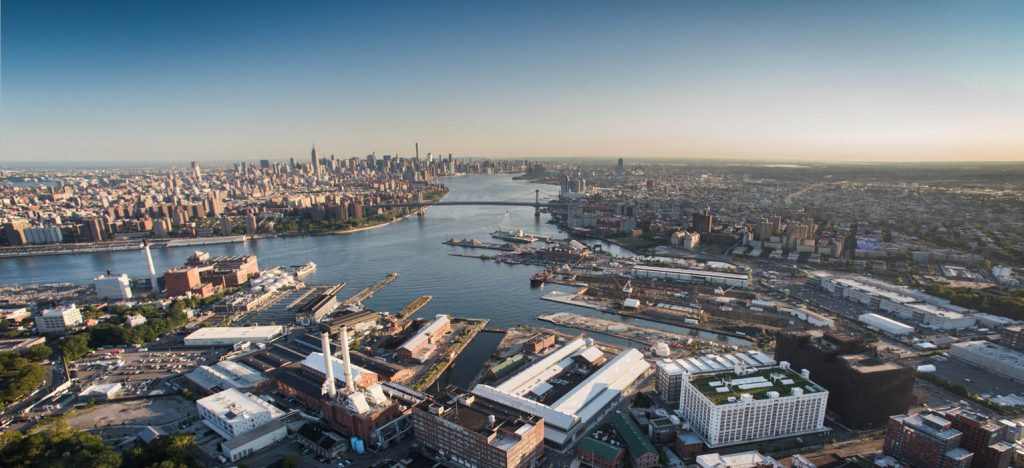Manufacturing in New York City is changing. Over the last several decades, larger firms that mass-produce goods have shed jobs or left the city’s five boroughs. Smaller companies that make specialty products are growing, but haven’t replaced all of the manufacturing jobs that have been lost since 2001. If the forecast for NYC manufacturing seems cold and cloudy at times, a closer look at a recent publication by Charles Euchner of the Center for an Urban Future (CUF) offers some bright rays of hope.
In Making It Here: The Future of Manufacturing in New York City, Euchner begins by examining the state of manufacturing in NYC. Published last July, the CUF study notes that the first six months of 2016 were one of the City’s longest sustained periods of manufacturing growth in decades. Yet manufacturing employment in thousands of jobs is still significantly smaller in 2016 (78.8) than in 2001 (158.6). The Big Apple’s manufacturing sector may be growing, but does this growth warrant much optimism?
“There is clear potential for additional manufacturing growth in the five boroughs,” Euchner contends. “However”, he cautions, “our research suggests that some parts of the city’s manufacturing ecosystem offer significantly more promise than others”. In particular, he cites three sectors where small specialty producers can make great gains: 3D printing, metal and wood fabrication, and food manufacturing. Current performance won’t guarantee future success, but support for manufacturing in NYC can help.
Small Specialty Producers
As Euchner explains, much of the city’s recent manufacturing growth is driven by “small, entrepreneurial companies” that supply specialty products to local buyers. That’s especially true for food, which became the city’s largest manufacturing sector (in terms of jobs) in 2014. The “buy local” movement has driven some of this growth, but changing consumer preferences aren’t the whole story. Small batches, quick turn-around times, and investments in technology also characterize small-but-successful manufacturers.
With wood and metal fabrication, a rise in the number of affluent New Yorkers plays an important role. To furnish luxury condos in Manhattan or second homes in the Hamptons, some residents are buying high-end interiors, finishes, and furniture. Demand for office space, a thriving film and TV production industry, and a world-renowned museum and gallery sector also support demand for fabricated wood and metal products that combine art with engineering.
Eucher’s predictions also envision a bright future for additive manufacturing. 3D printing pioneers like MakerBot and Shapeways are relatively large and well-known, but they’re not the only reason NYC is called “the 3D printing capital of the world”. According to the private research firm MarketsandMarkets, a source cited in the CUF study, New York City is home to 3,739 makers and 516 3D printers. These totals are significantly greater than the City’s closest 3DP competitors: Los Angeles, London, and Paris.
Support for Manufacturing
In Making It Here: The Future of Manufacturing in New York City, Charles Euchner also offers a series of recommendations for supporting NYC manufacturing. Near the very top of his list, he describes the importance of investing in “intermediaries that help strength local manufacturers”. Specifically, he cites the Industrial and Technology Assistance Corporation (ITAC), part of the nationwide Manufacturing Extension Partnership (MEP) system.
“NYC is home to over 5700 manufacturers, both traditional companies and entrepreneurial ones focused on making specialty products,” explained Kinda Younes, the Executive Director of ITAC, in an email interview with FuzeHub. “NYC is undoubtedly a tough environment for manufacturers, but those that operate in the City take advantage of its unique demographics and characteristics: the creative talent, the influx of immigrants, the 50+ million tourists per year, and the high concentration of wealth.”
By providing below-market consulting assistance, ITAC can help small manufacturers achieve big goals. “With the average manufacturer employing 13 companies, there are significant opportunities around helping these companies to scale,” Younes said. “ITAC works with them to make them more competitive — whether it’s helping them expand into new markets, introduce new products, optimize their processes, cut costs, or invest in new technologies to modernize their production processes.”
In addition to business and technical support, manufacturers may need help navigating the City’s many rules and regulations. As Charles Euchner told FuzeHub in a recent telephone interview, “businesspeople like transparency and consistency”. The CUF author’s next publication, a study about small businesses in New York City, is due out this fall.


1 thought on “How Manufacturing Will Make It in New York City”
Good summary of the CUF report. By the way, ITAC is publicly advancing the dialogue on these issues through a public event scheduled for this year’s Manufacturing Day, October 7th: https://www.eventbrite.com/e/manufacturing-day-2016-advanced-manufacturing-in-nyc-tickets-26707280194